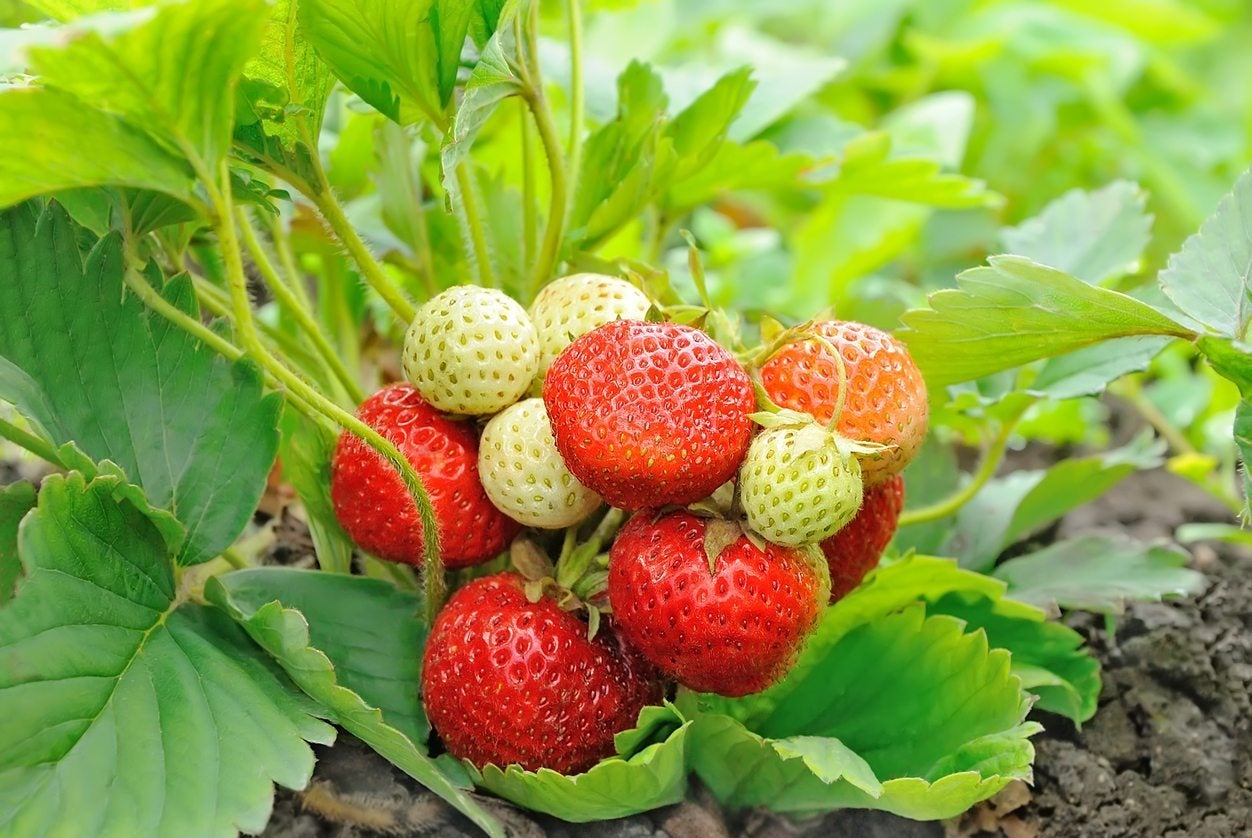Everbearing Strawberry Plants: Tips On Growing Everbearing Strawberries


With the continually rising prices of produce, many families have taken up growing their own fruits and vegetables. Strawberries have always been a fun, rewarding, and easy fruit to grow in the home garden. However, successful yields of strawberries can be dependent on which strawberries you grow.
Strawberries are classified into three groups: Everbearing, Day-Neutral, or June-bearing. Oftentimes, though, day-neutral strawberries are also grouped with everbearing types. In this article we will specifically answer the question, “What are everbearing strawberries.”
Read on for more information on growing everbearing strawberries.
What are Everbearing Strawberries?
By looking at strawberry plants you cannot tell if they are everbearing, day-neutral, or June-bearing. Therefore, we must rely on the proper labeling of strawberry plants at nurseries and garden centers to know which type we are purchasing.
Unfortunately, plant labeling is not a perfect science. They can fall out and get lost, plants can be mislabeled and, much to the vexation of garden center workers, customers sometimes pull out plant tags to read them just to stick the label back in any nearby plant.
In addition, many nurseries label both everbearing and day-neutral strawberries as everbearing despite differences in the two. However, the more experienced you become at growing these different types of strawberry plants, the more you’ll be able to recognize their distinguishable growing habits, in case they were mislabeled. Fruit production, quality, and harvest is what distinguishes between the different types of strawberries.
So when do everbearing strawberries grow and when can I harvest everbearing strawberries? Fruit production on June-bearing and everbearing strawberry plants is affected by day length, temperatures, and climate zone. Everbearing strawberry plants begin to form flower buds when day length is 12 hours or more per day.
Gardening tips, videos, info and more delivered right to your inbox!
Sign up for the Gardening Know How newsletter today and receive a free copy of our e-book "How to Grow Delicious Tomatoes".
True everbearing strawberry plants produce two to three separate yields of strawberries, one crop in spring to early summer, another crop in midsummer in cooler climates, and the last crop in late summer to early fall. Although they are generally called everbearing strawberries as well, day-neutral strawberries do not require any specific day length to set fruit.
Day-neutral strawberry plants usually produce fruit throughout the growing season. However, both day-neutral and everbearing strawberry plants do not tolerate high temperatures in summer; plants generally do not produce fruit in high heat, and may even begin to dieback. Everbearing strawberry plants, including day-neutral varieties, are best suited to cooler, mild climates.
Growing Everbearing Strawberries
While strawberry plants are generally considered hardy in zones 3 through 10, June-bearing types do better in mild to warmer climates, while everbearing strawberries do better in cooler to mild climates. Since June-bearing strawberry plants produce a singular crop of strawberries in spring to early summer, late spring frosts can damage or kill the fruit.
If everbearing strawberry plants are hit by late frosts, it is not quite as devastating because they will produce more fruit throughout the growing season. This fruit production is one of the main differences between June-bearing and everbearing strawberries.
June-bearing usually produce just one high yield each growing season, while everbearing strawberries will produce several smaller crops in a year. Everbearing strawberry plants also produce less runners. The fruit of everbearing strawberries is generally smaller than June-bearing strawberries too.
So when can you expect to harvest everbearing strawberries? The answer is simply as soon as the fruit is ripe. When growing everbearing strawberries, plants will generally start to produce fruit within their first growing season. However, the first year’s fruiting may be more sporadic and sparse.
Strawberry plants also produce less berries with age. After three to four years, strawberry plants usually need to be replaced because they no longer produce good quality fruit. Some popular varieties of everbearing and day-neutral strawberries are:
- Everest
- Seascape
- Albion
- Quinalt
- Tristar (day-neutral)
- Tribute (day-neutral)
-
 Types Of Tomatoes Explained: Explore The Many Wonderful Shapes, Colors, Flavors, & Best Uses
Types Of Tomatoes Explained: Explore The Many Wonderful Shapes, Colors, Flavors, & Best UsesThe world of tomato varieties is vast and fascinating. Learn about the key types to grow in your garden, tailored to your preferences and space.
By Amy Grant
-
 Try The Trend – Turn Any Bed Into A Keyhole Garden With This Clever In-Ground Composter
Try The Trend – Turn Any Bed Into A Keyhole Garden With This Clever In-Ground ComposterKeyhole gardening is an efficient and sustainable practice that saves space. Get started on this DIY project quickly and easily with an in-ground composter.
By Bonnie L. Grant